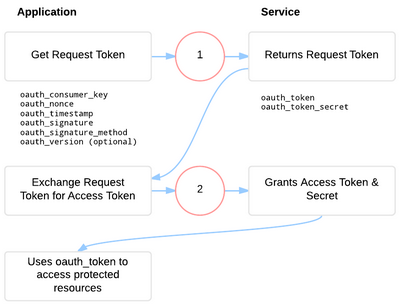Spring MVC RESTful example (Company and Beneficial owners endpoints)
This project is an example implementation of a RESTful API in Java using the Spring MVC framework.
Clone this project and run the application with gradle, using gradle wrapper:
gradlew bootRun
or your own gradle installation
gradle bootRun
You’ll need Java JDK 1.8+ installed. Gradle is not necessary because gradlew wrapper is provided with the project as described above.
To check for bugs and be able to browse them locally you have to download Spotbugs from http://spotbugs.readthedocs.io/en/latest/installing.html. Download it in zip format, then launch the spotbugs executable that is found inside the bin folder. Once the application is running, you can go to File > Open and select the findbugs report file (.xml) generally inside ${project_root}/build/reports/spotbugs/main.xml
/companies)POST /companies to create a new company
## Create a new companycurl -X "POST" "http://localhost:8080/companies" \-H 'Content-Type: application/json' \-d $'{"email": "info@apple.com","phone": "+1 333 555 8294","country": "USA","name": "Apple, INC","city": "Coupertino","address": "One Infinite Loop"}'
the expected HTTP result is as follows
HTTP/1.1 201Location: http://localhost:8080/companies/17Content-Length: 0Date: Sun, 17 Jun 2018 00:46:52 GMTConnection: close
returning a Location header that points at the newly created resource.
GET /companies to obtain a list of all companies present in the database
## Get all companiescurl "http://localhost:8080/companies"
returns a json array of companies
HTTP/1.1 200Content-Type: application/json;charset=UTF-8Transfer-Encoding: chunkedDate: Sun, 17 Jun 2018 00:52:01 GMTConnection: close[{"id": 17,"name": "Apple, INC","address": "One Infinite Loop","city": "Coupertino","country": "USA","email": "info@apple.com","phone": "+1 333 555 8294","beneficialOwners": []}]
GET /companies/{companyId} to obtain the information regarding a single company. Example GET /companies/17 as below
## Getting all data of company 17curl "http://localhost:8080/companies/17"
Result:
HTTP/1.1 200Content-Type: application/json;charset=UTF-8Transfer-Encoding: chunkedDate: Sun, 17 Jun 2018 00:56:13 GMTConnection: close{"id": 17,"name": "Apple, INC","address": "One Infinite Loop","city": "Coupertino","country": "USA","email": "info@apple.com","phone": "+1 333 555 8294","beneficialOwners": []}
Note that if the given company ID does not exist an HTTP NotFound error will be returned with a 404 status code.
PATCH /companies/{companyId} can be used to update one or more fields of the company resource.Curl call example:
## Update company fieldscurl -X "PATCH" "http://localhost:8080/companies/1" \-H 'Content-Type: application/json' \-d $'{"email": "info@one.com","phone": "+1 333 555 8294","country": "USA","name": "One","city": "Loop","address": "Infinite"}'
Response:
HTTP/1.1 200Content-Type: application/json;charset=UTF-8Transfer-Encoding: chunkedDate: Sun, 17 Jun 2018 01:40:08 GMTConnection: close{"id": 1,"name": "One","address": "Infinite","city": "Loop","country": "USA","email": "info@one.com","phone": "+1 333 555 8294","beneficialOwners": [{"id": 2,"name": "jhoeller"}]}
Note that if the given company ID does not exist an HTTP NotFound error will be returned with a 404 status code.
/companies/{companyId}/beneficialOwners)The provided methods for these resources are GET allo beneficial owners of a company and POST (create) a new beneficial owner.
POST /companies/{companyId}/beneficialOwners to create a new Beneficial owner
## Create a new beneficial owner for the given company resourcecurl -X "POST" "http://localhost:8080/companies/17/beneficialOwners" \-H 'Content-Type: application/json' \-d $'{"name": "Beneficial"}'
Response from this call is as follows:
HTTP/1.1 201Location: http://localhost:8080/companies/17/beneficialOwners/18Content-Length: 0Date: Sun, 17 Jun 2018 22:15:40 GMTConnection: close
GET /companies/{companyId}/beneficialOwners to obtain all beneficial owners of the given company
## Create a new companycurl "http://localhost:8080/companies/17/beneficialOwners" \-H 'Content-Type: application/json'
Responds with the following array of object
HTTP/1.1 200Content-Type: application/json;charset=UTF-8Transfer-Encoding: chunkedDate: Sun, 17 Jun 2018 22:22:12 GMTConnection: close[{"id":18,"name":"Beneficial"}]
Note that if the given company ID does not exist an HTTP NotFound error will be returned with a 404 status code.
The tests are run easily with the gradle task
gradlew test
For a better reporting there is another gradle task available which runs the tests and aferwards ccreates the reports in jacoco xml format. This task also runs spotbugs. To have a browsable report from Jacoco you need to edit the build file build.gradle from this
jacocoTestReport {reports {xml.enabled truecsv.enabled falsehtml.enabled = false//html.destination file("${buildDir}/jacocoHtml")}}
to this
jacocoTestReport {reports {xml.enabled falsecsv.enabled falsehtml.enabled = true}}
To have tests run and reports generated, execute the following gradle task:
gradlew check
Application is deployed to Heroku at https://restful-cmp.herokuapp.com/companies
A suggested authentication method between client and this backend server would be two-legged OAuth 2.0.
As described in this image
This project is licensed under the GPL 3.0 - see the LICENSE.md file for details